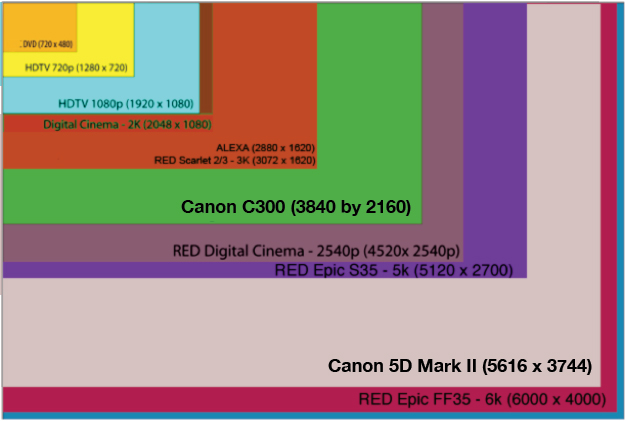This week features a series titled: “DSLR Filmmaking & Lenses: What You Should Know Now,” a series of blog posts explaining the importance and benefits of specific types of camera lenses (ultra wide, wide, normal, portrait, telephoto) by contributor Jeff Bauer
Introduction: Sensors and Lenses
In the world of film and video, there are many different types of lenses, typically organized by focal length.
- Ultra Wide: < 21mm
- Wide: 21- 35mm
- Normal: 35 – 70mm
- Portrait: 70 – 135mm
- Telephoto: 135 – 300mm
When searching for a specific look for your images, it’s important to take into account a wide array of details. Size, weight, focal length, and aperture all play an important role, but there are other determining factors such as the lens mount, focusing mechanisms and sensor size.

We know that digital cameras and DSLR cameras use sensors, not film, to produce images. The size of that sensor directly determines factors such as the depth of field and the focal length of the image. Essentially, the final product is a collaboration between the lens and the camera. Each lens has its own specific focal length and each camera effects that focal length by a crop factor based on the size of the sensor. The actual focal length produced is then different than what the lens says, effectively changing the perspective of your video. All lenses still use 35mm film terminology despite the multitude of sensor sizes and crop factors in the video world. You just basically have to do the math and you’ll never have to buy the wrong lens.
Typically, smaller cameras have smaller sensors, allowing for lenses to also be smaller, effectively shrinking the focal distance between the camera sensor and lens. This focal distance is important when mounting lenses not designed for your camera. If the lens elements are too close or too far away from the sensor, the image will be blurry and unable to focus correctly. The lens also needs to be able to cover the whole sensor so that there’s no vignetting on the image. If we take this principal further, the larger the sensor, the larger the lens needs to be to cover the entire sensor. A small sensor lens mounted to a camera body designed for larger lenses, cannot cover the entire frame, again causing vignetting.
Things start to get interesting when you take a larger lens and mount it to a camera with a smaller sensor. Because the lens easily covers the sensor, the image will appear to be zoomed in, showing a narrower field of view, and resulting in an increase in actual focal length. All that is needed is a way to mount these lenses to your body while maintaining the correct focal distance. A simple adapter can mount a lens from another company or format onto your camera, allowing a larger selection of lenses to be utilized that wouldn’t normally be used together (ex. Legacy Nikorr lens on a Canon body).
Example: A Canon 5D Mark III has a full frame sized sensor (35mm equivalent) and the Canon 60D has an APS-C sized sensor, which is smaller than full frame. When you take a 24mm lens and mount it the 5D, the sensor matches the lens and a 24mm focal length is actually visualized. Now, the 60D has a crop factor of 1.5x which means that the 24mm lens would actually show you a field of view similar to a 35mm lens. The smaller the focal length, the more distance is magnified between objects, giving a slightly distorted perception, whereas a longer focal length appears to compress distance, creating a flat image and a shallow depth of field.
All of these principals are key when deciding on a lens. The more you know about your camera, the more you’ll know about what lens type you are looking for.
First Up in the Series – Part I: Ultra Wide Angle Lens
